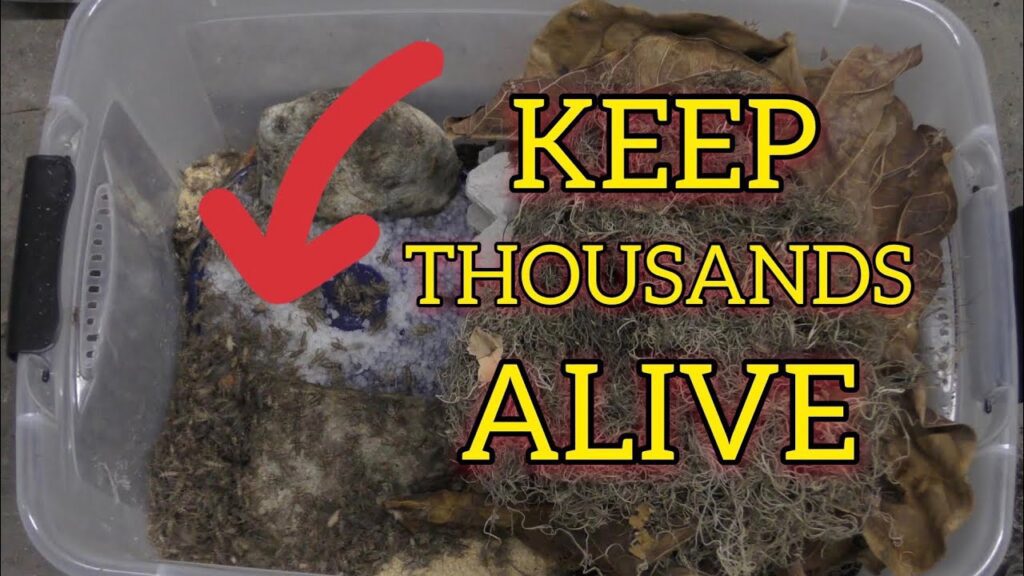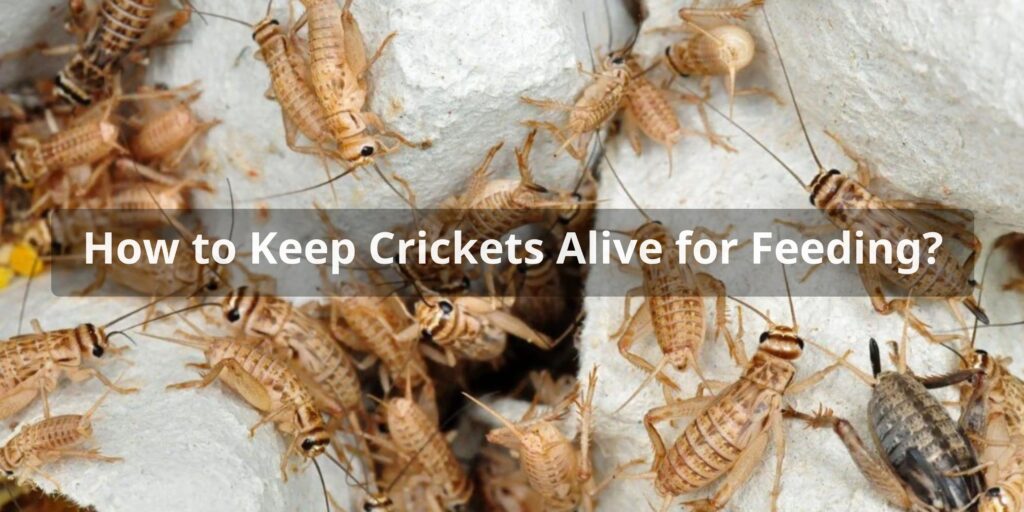If you’re an avid reptile or amphibian owner, then you know that crickets are one of the most popular feeder insects for these types of pets. However, it can be a real challenge to keep crickets alive for feeding purposes. In this guide, we’ll give you some tips and tricks on how to keep crickets healthy and alive for as long as possible.
Understanding Crickets’ Needs
Before diving into the specifics of keeping crickets alive, it’s important to understand their basic needs. Crickets require three things to thrive: food, water, and shelter. Without these three essentials, they won’t last long.
Food
Crickets are omnivores, meaning they eat both plants and animals. They will eat just about anything you give them, but it’s best to provide them with a varied diet. Some good options include:
- Commercial cricket food
- Fresh fruits and vegetables (carrots, kale, apples, etc.)
- Protein sources (chicken feed, dog food, etc.)
Water
Like all living creatures, crickets need access to clean water. You can provide water to your crickets in a few different ways:
- Gel crystals: These are small, water-absorbent crystals that you mix with water. The crystals absorb the water and turn into a gel-like substance that crickets can drink from.
- Water dishes: You can use any shallow dish to provide water to your crickets. Just make sure it’s not too deep, or the crickets may accidentally drown.
- Vegetables: Some vegetables, such as cucumbers and oranges, have high water content and can serve as a source of hydration for your crickets.
Shelter
Crickets need a place to hide and feel safe. This can be as simple as providing them with empty egg cartons or pieces of paper towel. You can also purchase commercial cricket habitats that come with built-in shelters.
Setting Up a Cricket Habitat
Now that you know what crickets need to survive, it’s time to set up their habitat. Here’s what you’ll need:
- A container: You can use any plastic container with a lid for keeping crickets. Just make sure it’s at least 10 gallons in size and has plenty of ventilation.
- Crickets need something to burrow into and lay their eggs. Some good options include potting soil, vermiculite, or coconut fiber.
- Food and water dishes
- Shelter: As mentioned earlier, you can provide crickets with egg cartons or paper towel rolls. Alternatively, you can purchase a commercial cricket habitat that comes with built-in shelters.
Once you have all your supplies, set up the cricket habitat by adding a few inches of substrate to the bottom of the container. Place the food and water dishes on top of the substrate, and add some shelter options. Finally, add your crickets to the habitat.
Maintaining a Healthy Cricket Population

Keeping crickets alive isn’t just about setting up a habitat and providing them with food, water, and shelter. You need to maintain their environment and monitor their health to ensure they stay healthy and alive.
Temperature
Crickets are cold-blooded creatures, meaning their body temperature is regulated by the environment around them. They thrive in temperatures between 70 and 85 degrees Fahrenheit. If the temperature drops below 60 degrees or climbs above 90 degrees, it can be fatal for your crickets.
Humidity
Crickets need a certain level of humidity to survive. Ideally, the humidity in their habitat should be between 50% and 75%. You can monitor the humidity using a hygrometer, which can be purchased at most pet stores.
Cleaning
Crickets produce waste, just like any other living creature. It’s important to clean their habitat regularly to prevent the buildup of bacteria and parasites. Remove uneaten food and dead crickets daily, and replace the substrate every few weeks.
Health Monitoring
Keep an eye on your crickets’ health. Healthy crickets are active, alert, and have a good appetite. Sick crickets may appear lethargic or lose their appetite. If you notice any signs of illness, such as discoloration or unusual behavior, separate the sick cricket from the rest of the population and consult with a veterinarian who specializes in exotic pets.
Conclusion
Keeping crickets alive for feeding purposes can be a challenge, but it’s not impossible. By understanding their basic needs, setting up a proper habitat, and maintaining a healthy environment, you can provide your reptiles and amphibians with a consistent source of nutrition.
- Explore more in How to Breed Crickets for Lizards: A Comprehensive Guide
FAQs About How to Keep Crickets Alive for Feeding
What container should I use to house crickets?
Use a well-ventilated plastic or glass container with smooth sides to prevent escape. Place egg cartons or cardboard tubes as hiding spots. Ensure the container has a secure lid with small ventilation holes.
What do crickets eat and how do I provide it?
Crickets eat a balanced diet of fruits, vegetables, and grains. Offer them foods like carrots, potatoes, and commercial cricket food. Place food in small dishes to prevent mixing with the substrate, ensuring they have access to a clean food source.
How do I maintain the temperature and humidity for crickets?
Keep the temperature around 75-85°F (24-29°C) and humidity at around 50-60%. Use a heat mat or lamp for warmth, and mist the container with water to maintain humidity. Regularly monitor conditions and adjust as needed.
How often should I clean the cricket container?
Cleaning frequency depends on the container size and the number of crickets. Generally, clean out uneaten food, feces, and dead crickets every 1-2 weeks to prevent odor and disease.
Can I use commercial cricket food for feeding?
Yes, commercial cricket food can be used to provide essential nutrients. Combine it with fresh vegetables and fruits to create a well-rounded diet. Proper nutrition in the food benefits both the crickets and the pets they are fed to.
How do I prevent crickets from escaping?
Ensure the container has a secure lid with small ventilation holes that crickets can’t fit through. Use smooth-sided containers, and avoid overcrowding. Regularly check for gaps or loose parts that might allow escape.
What should I do if crickets die in the container?
Promptly remove dead crickets to prevent mold and odor. High humidity can contribute to cricket deaths, so adjust the environment if necessary. Proper ventilation, clean conditions, and a balanced diet can help prevent excess mortality.



